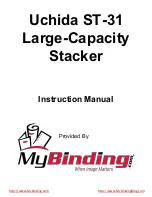
NumaLink-3.0™ Users Guide and Service Manual
Page 9 of 33
The entire work directory tree is purged periodically of files that are older than a certain number of days,
as specified in the general translator configuration.
As a rule, NumaLink-3.0 does not specify how the image files get to the input directory, or what happens
to them after they are written to the output directory. (In many cases, Numa can provide utilities that
facilitate or automate the transfer of files from and to various OEM systems; see section
Error!
Reference source not found.
for more information.) There are two exceptions to this rule:
1.
A translation can be configured to execute a specified post-processing command after the translation
is performed. This feature can be used to further process or move output files.
2.
For DICOM outputs, the translation can be configured to perform a store of the output files to a
DICOM Application Entity. Such a store consumes the output files and removes them from the output
directory.
For translations to DICOM, NumaLink-3.0 can either write the date to DICOM Part 10 files as shown in
Figure 4, or it can initiate a DICOM store operation to another DICOM Application Entity as shown in
Figure 5.
Figure 5 – NumaLink-3.0 DICOM Data Flow
Image placed in
input directory for
translation and
remote storage
NumaLink
Image stored
remotely
Image placed in
input directory for
translation to
local file
NL-CONF-002
DICOM
Standard
Interface
Translated image
written to Part 10
comformant file
in local directory
More information on NumaLink-3.0 DICOM conformance can be found in section 4.2.2.
3.1 A Typical Translation
NumaLink-3.0 takes the following steps to perform a typical translation.
1.
The input directory is checked periodically for input files; if no files are found, NumaLink-3.0
schedules another directory check, then sleeps and re-performs this step.











































